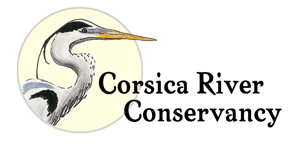Temperatures are warming, the geese are flying north and the ospreys and bluebirds have started building their nests. It is a good time to take stock of our yards and our waterways.
March 1 marks the end of the lawn fertilizer blackout dates. Proper use of fertilizer is important to make sure the nitrogen and phosphorus do not run off into streams and creeks. Lawn care professionals hired to fertilize lawns must be licensed and certified by the department. Citizens can verify that their lawn care provider is certified by visiting the Maryland Department of Agriculture website. The best option? Wait until fall to apply fertilizer to lawns, when it does the most good.
Now is also the time to plan for planting. If you did not test soil in the fall, as soon as ground thaws, take soil samples from different parts of the garden or lawn, to a depth of 6 to 8 inches and send to a soil testing lab. The University of Maryland’s Home and Garden Information Center, www.hgic.umd.edu, tells how to take samples and lists regional labs; see “Selecting Soil Test Lab,” HG#110. It is also a good time to consider planting buffers along waterways. A good book on buffers is https://dnr.maryland.gov/criticalarea/Documents/GreenBook_Buffer.pdf
As the weather warms, the Conservancy will also support watershed wide clean ups. The annual spring Clean Stream event, sponsored by the Alliance for the Chesapeake Bay will be held this year on April 4th. The Conservancy will also be holding weekend clean ups. One only has to drive County roads to see how much trash has been dumped. Details will be posted on the CRC website and Facebook pages. A bill in the Maryland General Assembly this session will address part of the trash problem at the front end by reducing the prevalence of single use plastics.
For those who were intrigued by the recent photo of an otter sunning on a Corsica River dock, you may be interested in attempts to create a Chesapeake Bay Otter Alliance. The goal of this group, sponsored by the Smithsonian Environmental Research Center, is too promote the North American river otter (Lontra canadensis) as a flagship species for coastal conservation and a sentinel species for ecosystem and public health. For more information, see https://serc.si.edu/research/projects/chesapeake-bay-otter-alliance
